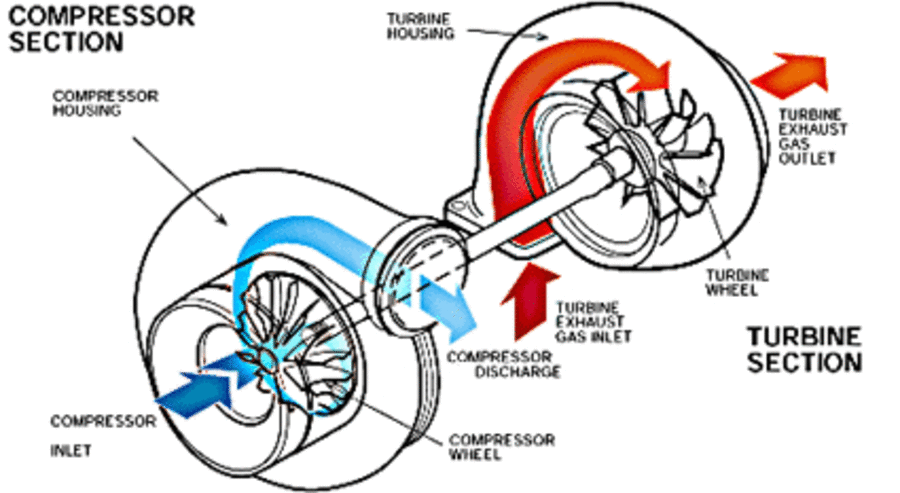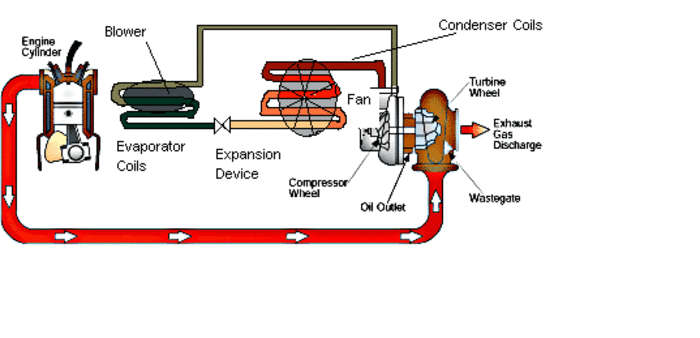TURBO AIR CONDITIONER
Consider any normal car air-conditioning system. According to the U.S. National Renewable Energy Laboratory (NREL), an automobile is used on an average for 249 hours annually and air conditioner usage is about 43% to 49% of the vehicle usage. Each vehicle uses 235 litres of gasoline annually for operating the air conditioner. Imagine the number of cars plying on the planet and imagine the amount of fuel we could save if we could take some load off the fuel. Clouds of hot gases issue out of our vehicles. Not only do they pollute the atmosphere, they also take waste heat with them -- wasted heat means wasted energy. If somehow this energy could be captured and made to work...and that is precisely what the Turbo air conditioner does.
The turbo air conditioner works on the principle of a turbocharger i.e. the hot gases which are the end products of combustion in an engine are used to run a turbine coupled to a compressor. This compressor is a unit of the vapour compression cycle employed in air conditioning. The complete working may be explained as follows. The exhaust gases released from the cylinder are made to pass through a nozzle which increases their velocity. They are made to hit the blades of an impact turbine. The turbine and compressor are mounted on a single shaft.The compressor may be a centrifugal or rotary but rotary compressors are known to be more efficient. As the turbine rotates it causes the impeller of the compressor to rotate and hence compress the refrigerant. From here onwards it functions like any other air conditioning unit following the vapour compression cycle i.e. the high pressure gas now moves to the condenser, where it is liquefied, then through an expansion valve where its pressure is reduced and then through the evaporator where it gains heat from the ambient air, thereby cooling it and again vaporising to be compressed in the turbo compressor.
With turbo air conditioner one can save around 5% to 10% of the fuel. According to NREL car air conditioners account for a whopping 7 billion gallons of gasoline which is 6 percent of America’s total yearly fuel consumption. Not only will we be doing mother earth a favour by decreasing fuel usage, hence saving fuel and cutting on emissions but our engine life will also increase. The engine will not sound as loud and the acceleration will more responsive.
Being inspired by the turbocharger, the turbo air conditioner would be manufactured along the same lines. Instead of connecting the compressor back to the engine (as is done in a turbocharger), we connect it to the condenser coils. Turbo air conditioner can have immense market potential. After all who does not want to save money spent on fuel. It a can be developed as a healthier and cheaper alternative to present day car air conditioning systems.
Voting
-
ABOUT THE ENTRANT
- Name:Mahvash Afzal
- Type of entry:individual
- Software used for this entry:adobe photoshop
- Patent status:none





